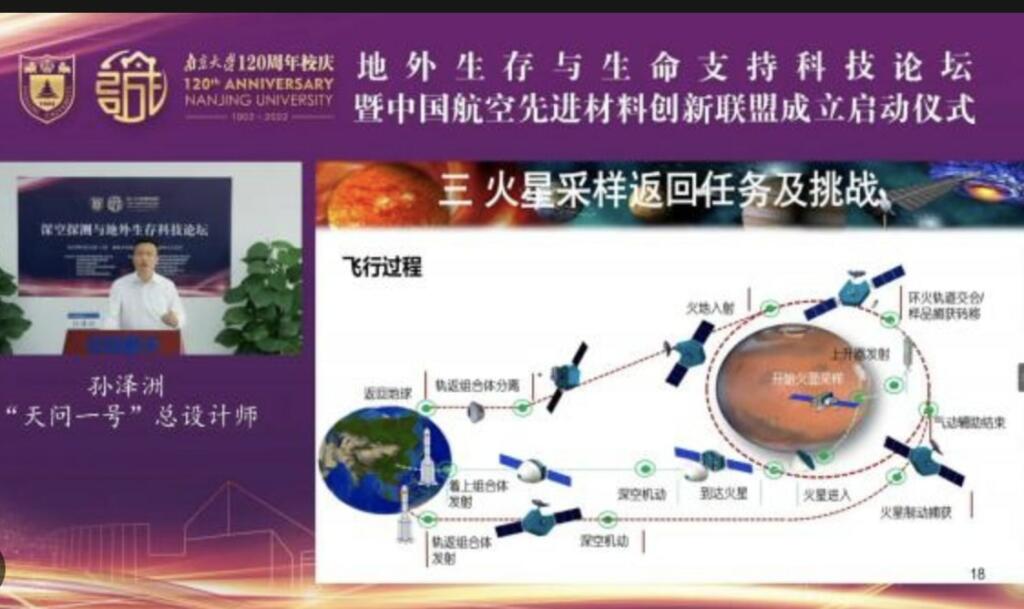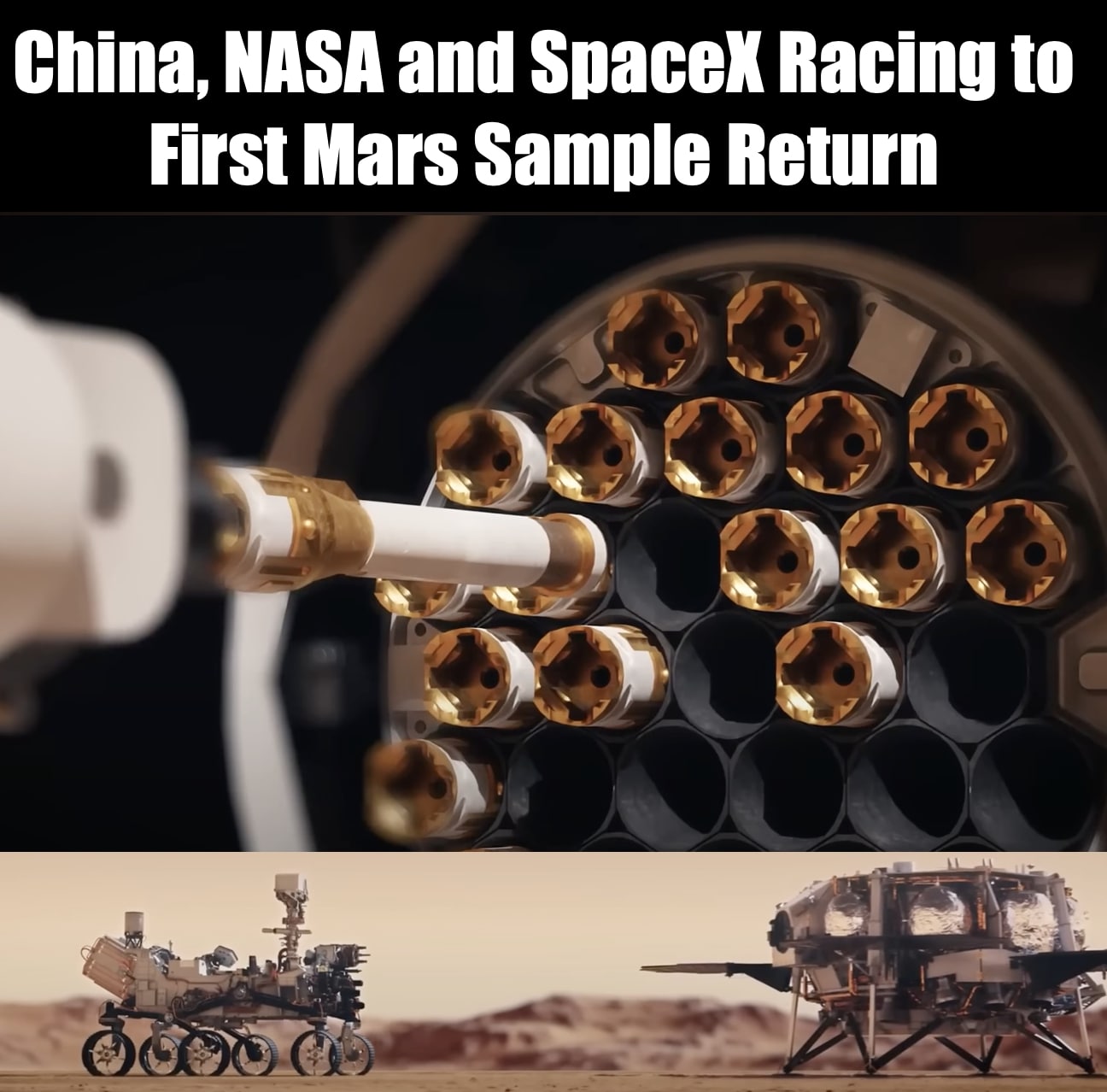China’s Mars sample return mission, Tianwen-3, is scheduled to launch in late 2028. The mission will consist of two launches, with a lander and ascent vehicle on a Long March 5 and an orbiter and return module on a Long March 3B. The samples are expected to return to Earth in July 2031.
New details of the Tianwen-3 mission to collect samples from Mars and return them to Earth were revealed in presentations made at the Hefei International Conference in Anhui province on April 22. The mission will use a pair of Long March-5 rockets to send two separate spacecraft to the Red Planet around 2030 to collect and return 500 grams of samples.
The next step in the Chinese conquest of Mars will be to launch two separate probes, one equipped with a lander which will have to collect Martian soil samples and send them into orbit utilizing an ascent device that will join up with the second probe which, once docked the vehicle with the pieces, it will return to Earth, delivering the precious cargo.
Unlike the mission profile studied by ESA and NASA for the Sample return mission, which envisages the launch of a single vehicle separated into a lander and an orbiter, the Chinese project uses two Long March-5 launches which will depart from Wenchang in November 2028.



If successful, Tianwen-3 would be the first robotic delivery of Mars samples to Earth. The mission would beat the schedule of a similar mission planned by NASA and the European Space Agency (ESA), which is targeting a 2033 sample return date.
The NASA samples are already being collected and stored by a Mars Rover. However, the next NASA, ESA mission must arrive and return with those samples.
SpaceX is also planning to go to Mars. There are no specific scheduled missions yet. However, SpaceX can move quickly and an ummanned mission to Mars in 2026 could also include a sample return by 2028.

Brian Wang is a Futurist Thought Leader and a popular Science blogger with 1 million readers per month. His blog Nextbigfuture.com is ranked #1 Science News Blog. It covers many disruptive technology and trends including Space, Robotics, Artificial Intelligence, Medicine, Anti-aging Biotechnology, and Nanotechnology.
Known for identifying cutting edge technologies, he is currently a Co-Founder of a startup and fundraiser for high potential early-stage companies. He is the Head of Research for Allocations for deep technology investments and an Angel Investor at Space Angels.
A frequent speaker at corporations, he has been a TEDx speaker, a Singularity University speaker and guest at numerous interviews for radio and podcasts. He is open to public speaking and advising engagements.


I wonder what they’re going to do with all that iron, silicon and aluminum oxides they retrieve at cost of > $1B. I hope they bring back enough to pot a plant. Goodness knows all the secrets unlocked by those moon rocks we brought back.
Silliness. Just mobilize, stock, prepare, and start the pre-colonization process. We are reaching a timeline where accelerating technologies will start sending payloads at faster rates thus bunching and over-lapping missions. The 2030s will be littered with missions that started out years apart with many flights and cargoes witheld for ‘the next best thing’ thus disrupting the essential logistical, build-up and outpost construction sequence.